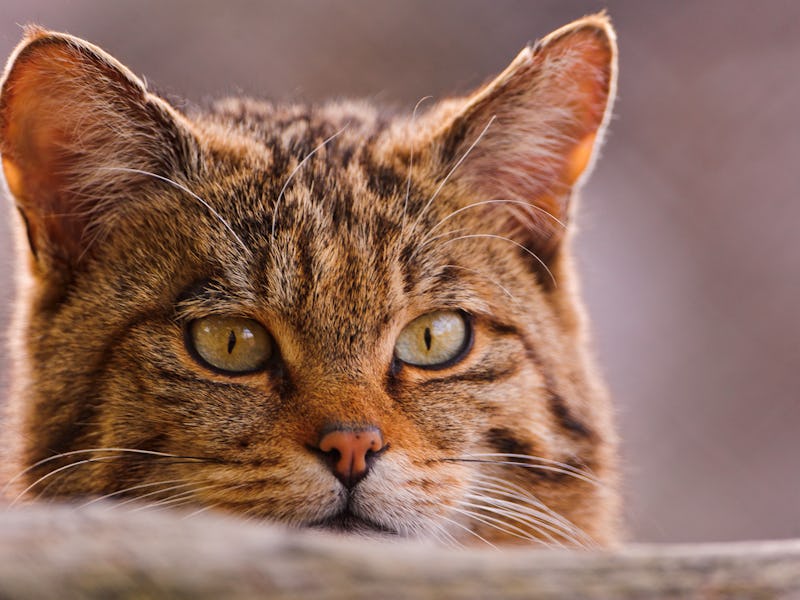What If All the Cats in Detroit Grew to the Size of Lions?
Big cats and house cats aren't all that different from a biological perspective, but there are definitely some practical issues.

Here at ‘Inverse’, we like to explore horrifying, if unlikely, scenarios, which is why we’ve publicly mulled what would happen if Cleveland’s corpses rose from their graves, if a Tyrannosaur got loose in Minneapolis, and if there were a nuclear meltdown in Kansas. This week, we give Detroit lions something they’d actually have to care about.
If each domesticated cat in Detroit grew to the size of a lion, the results would be catastrophic. It’s a science-fictional premise or the plot of a third-tier DC Comics villain, but let’s do the math (and biology) on this anyway.
Given the American Veterinary Medical Association’s average of two cats in every cat-owning household (nationally, an estimated three in 10), Detroit is home to somewhere around 160,000 pet cats living in an estimated 269,000 occupied homes. Counting feral cats, like herding them, is nigh impossible: In 2011, the Associated Press estimated there were 657,000 Detroit strays, but a more conservative 2014 survey put the number at 18,000. So let’s stick to the low end and say that we have about 180,000 lion-sized kitties on our hands.
Obviously, the city is going to need more cat food, but would humans accidentally step into that role. Would a housecat the size of a lion act like a lion?
Probably. Researchers at the University of Edinburgh, writing in the Journal of Comparative Psychology in 2014, juxtaposed the behavior and temperament of domestic cats with those of four other cat species, including lions, observed at a zoo. Domestic cats showed similar neurotic behaviors as lions, and, “across the five felid species [scientists] assessed, personality structure was strikingly similar.”
There are no more than 40,000 adult lions on the entire continent of Africa, but even at these historically low numbers they clash with, and kill, humans. Still, data on lion casualties is fairly spotty. The Telegraph wrote in 2009 that man-eating lions caused 250 deaths annually, which seems high. A 2005 study in the journal Nature put the number at 37 deaths per year in Tanzania, the country with the highest lion population.
The problem with embiggened cats is that they would not fear humans, which might be a problem given that it’s unclear whether or not cats are (or can be) domesticated in any real way. It depends, ultimately, on how you define domestication — always a bit of a fool’s errand — but genetics and archaeological records indicate we haven’t embraced cats for nearly as long as we have dogs. The consensus is that cats are domesticated, but given the shorter time frame retain many of their catty behaviors and shapes. This is, perhaps, the reason we have dogs that are larger than wolves and don’t worry about them killing us.
And worry we should if Detroit gets lionized. Assuming the physiological demands are the same for a 400-pound Siamese and a 400-pound African lion, the average window sitter is going to be chocking down 10 to 15 pounds of meat a day. That last trip to PetSmart won’t be enough to save anyone’s life.